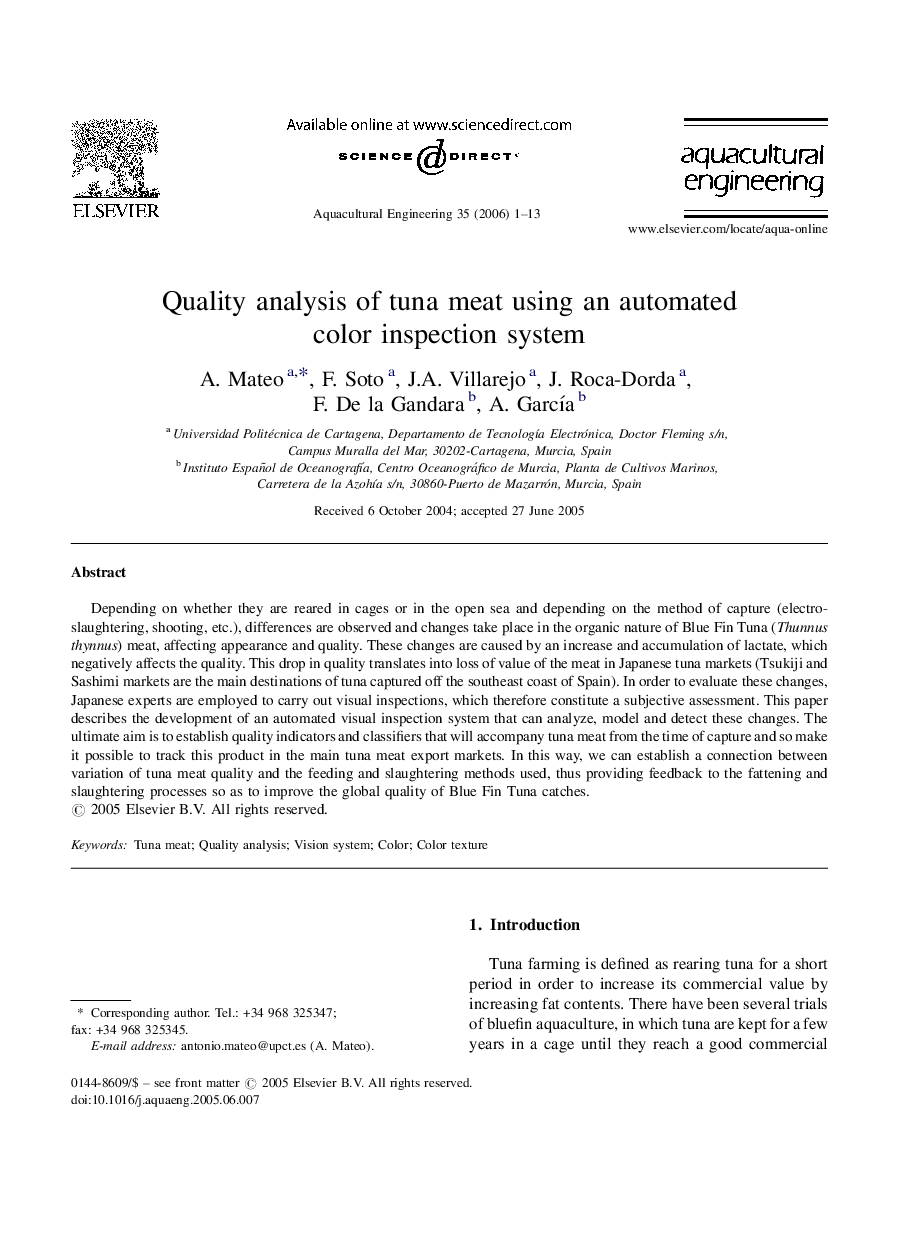| Article ID | Journal | Published Year | Pages | File Type |
|---|---|---|---|---|
| 6381632 | Aquacultural Engineering | 2006 | 13 Pages |
Abstract
Depending on whether they are reared in cages or in the open sea and depending on the method of capture (electroslaughtering, shooting, etc.), differences are observed and changes take place in the organic nature of Blue Fin Tuna (Thunnus thynnus) meat, affecting appearance and quality. These changes are caused by an increase and accumulation of lactate, which negatively affects the quality. This drop in quality translates into loss of value of the meat in Japanese tuna markets (Tsukiji and Sashimi markets are the main destinations of tuna captured off the southeast coast of Spain). In order to evaluate these changes, Japanese experts are employed to carry out visual inspections, which therefore constitute a subjective assessment. This paper describes the development of an automated visual inspection system that can analyze, model and detect these changes. The ultimate aim is to establish quality indicators and classifiers that will accompany tuna meat from the time of capture and so make it possible to track this product in the main tuna meat export markets. In this way, we can establish a connection between variation of tuna meat quality and the feeding and slaughtering methods used, thus providing feedback to the fattening and slaughtering processes so as to improve the global quality of Blue Fin Tuna catches.
Related Topics
Life Sciences
Agricultural and Biological Sciences
Aquatic Science
Authors
A. Mateo, F. Soto, J.A. Villarejo, J. Roca-Dorda, F. De la Gandara, A. GarcÃa,
